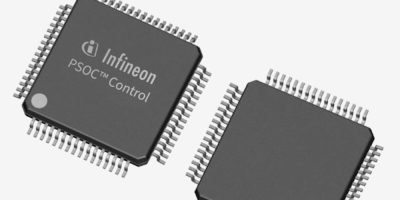Mouser is now stocking the PSOC Control C3 microcontrollers (MCUs) from Infineon Technologies. The PSOC Control C3 MCUs combine power and performance, allowing designers to bring the next generation of industrial solutions to the market. Developed specifically for motor control applications, the PSOC Control CM3 product line is ideal for EV charging, industrial motor control, robotics, server and telecom power supply units (PSUs), and smart home appliances.
The Infineon Technologies PSOC Control C3 microcontrollers, now available at Mouser, feature an Arm® Cortex®-M33-based core with real-time control for high-performance motor control products. A 12-bit, 12-Msps ADC with true synchronous “idle” sampling of up to 16 analogue signals delivers results up to 25% faster without sampling jitter, while a CORDIC Accelerator can switch off the CPU and increase computational power for real-time critical tasks. The PSOC MCUs also integrate a programmable timer/counter pulse-width modulator (TCPWM) with a Motion Interface (MOTIF) block that can be used to communicate motor control signals. These dedicated subsystems allow the PSOC MCU to reduce the system bill of materials (BOM) while improving the performance of next-gen products. The PSOC Control MCUs are PSA Certified™ Level 2, featuring advanced security features such as cryptography, secure boot, and processing isolation. The MCUs are delivered with ready-to-use code examples and development tools supported in the ModusToolbox™ software suite.
Infineon Technologies offers two development kits for the PSOC Control C3 Microcontrollers. The PSOC Control C3M5 Evaluation Kit is for developing motor control solutions using PSOC Control C3. The kit includes a PSOC Control C3M5 EVK board, a USB Type-A to USB Type-C® cable, jumper wires, and a quick start guide. The PSOC Control C3M5 Complete System Motor Control Kit offers a C3M5 motor control card for developing motor control solutions in combination with power stage evaluation boards.







